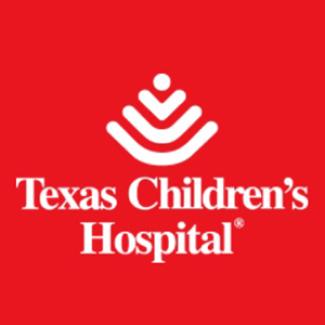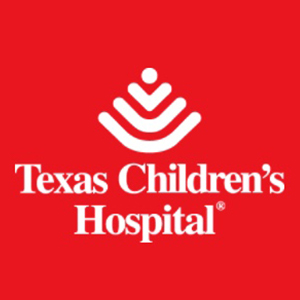
2015 Neurological Research Round-up
 This past year was exciting and productive for neuroscience researchers at Texas Children’s Hospital. Texas Children’s Neurology and Neurosurgery departments were once again ranked #2 among the nation’s children’s hospitals by U.S. News & World Report.
This past year was exciting and productive for neuroscience researchers at Texas Children’s Hospital. Texas Children’s Neurology and Neurosurgery departments were once again ranked #2 among the nation’s children’s hospitals by U.S. News & World Report.
Undoubtedly, that is largely due to the highest quality of specialized clinical care we provide to patients with neurological and neurodevelopmental disorders. Another very important reason for our consistently high national rankings, is our cutting-edge basic and clinical research programs. Our physicians and scientists are constantly on a quest to identify new therapies for incurable neurological conditions and to improve the standard of care for our patients.
Here is a snapshot of the most important research discoveries from Texas Children’s Neuroscience Center this year.
Clinical research highlights
-
The first successful interventional drug trial for Rett Syndrome was conducted at Texas Children’s this year. This trial symbolizes our commitment to finding a cure for Rett syndrome. From Dr. Huda Zoghbi’s discovery of the gene that causes Rett syndrome in the late 1990s, to being the lead site for the first clinical trial, Texas Children’s has been a pioneer in Rett syndrome research. Dr. Daniel Glaze led this trial which was cosponsored by Neuren Pharmaceuticals and International Rett Syndrome Foundation. The trial was conducted to test the safety, tolerability and efficacy of NNZ-2566 (trofenitide) among adolescent girls and women. The Food and Drug Administration (FDA) is currently reviewing the data and additional trials to test its safety and efficacy are being planned for 2016.
-
We successfully completed a year-long interventional trial of Ataluren, a novel gene modifying drug for Duchenne muscular dystrophy (DMD), a progressive muscle wasting disease. This trial was conducted by Dr. Timothy Lotze in collaboration with PTC Therapeutics. Ataluren is an orally administered small-molecule compound that targets a specific nonsense genetic mutation in dystrophin gene in some DMD and cystic fibrosis patients. This mutation creates a premature stop signal and prevents the production of a functional dystrophin protein. Ataluren interacts with ribosomes and allows them to skip over the stop signal to produce a full-length, functional dystrophin protein. This specifically targeted drug is anticipated to increase the quality of life of patients by retaining some mobility and increasing their life span, all with fewer undesirable side effects. In fact, the results of this study have been so encouraging that Texas Children’s has been invited by PTC Therapeutics to participate in a follow-up study.
- Texas Children’s is the first pediatric institution in the state of Texas to be approved to study the clinical benefits of pharmaceutical grade cannabidiol, Epidiolex, in several trials sponsored by GW Pharmaceuticals. This year a team led by Dr. Angus Wilfong evaluated the use of Epidiolex as a treatment for various catastrophic epilepsies, including Dravet’s and Lennox-Gastaut syndromes. Texas Children’s has been at the forefront of studying the potential clinical benefits and risks of using Epidiolex because we believe it is crucial to thoroughly understand its safety and efficacy before prescribing it to patients, especially infants and young children.
Basic research highlights
The Jan and Dan Duncan Neurological Research Institute (NRI) opened its doors in 2010 and is among the world’s leading basic research institutes dedicated to solving childhood neurological and neuropsychiatric diseases.
The NRI welcomed 2015 with the launch of a brand new website that showcases cutting-edge epilepsy research, conducted by our researchers at the Cain Foundation Laboratories, as well as other neuroscientists from around the globe.
In its fifth year, scientists at the NRI continued to make rapid strides in understanding the cause of many currently incurable neurological diseases with the ultimate aim of developing therapies.
-
A compelling study published in “Nature” by Drs. Jiarong Tang and Zoghbi, along with their teams, recently showed that stimulating neurons in a specific region of the brain with electric pulses can restore normal cognitive function in mice suffering from Rett syndrome. This is a severe intellectual disability disorder caused due to defective function of MECP2 gene and mainly affects little girls. While deep brain stimulations are routinely used in certain motor dysfunctions, like Parkinson’s, this is the first time its potential application in neuropsychiatric conditions has been explored. Read the synopsis.
-
A recent landmark study from Dr. Zoghbi’s lab shows that in animal models, symptoms of MECP2 duplication syndrome, a debilitating neurological condition commonly seen in boys, can be reversed using anti-sense oligonucleotides. For MECP2 duplication syndrome patients and their families, this study provides the first ray of hope for a cure.
- A paper published in “Molecular Cell” by Dr. Christian Schaaf and colleagues describes how mutations in MAGEL2, TRIM27 and USP7 gene triad causes Prader-Willi or Schaaf-Yang syndromes in seven individuals. Read a synopsis of this study. While this paper was being published, students in his lab became aware of Tess Bigelow, a girl in Maine who had mutations in USP7 gene and suffered from global developmental delay, visual impairment and hip dysplasia. Find out how Dr. Schaaf’s study will help this little girl.
- An interesting study conducted by Dr. John Swann’s laboratory at the Cain Foundation Labs identified abnormal high-frequency oscillations to be the molecular cause of infantile spasms (West syndrome), a severe form of childhood epilepsy. Read the synopsis.
Read all exciting research discoveries and news stories from the NRI and Cain Labs.
Our physicians and scientists believe that in order to efficiently identify and develop novel therapies for some of these difficult neurological conditions, it is crucial to closely collaborate with patient families, pharmaceutical or biotech industry experts, as well as various private federal granting agencies like the NIH (National Institutes of Health). Therefore, since its inception, the NRI has been hosting biennial symposia that bring together various key stakeholders to facilitate and promote dialogue.